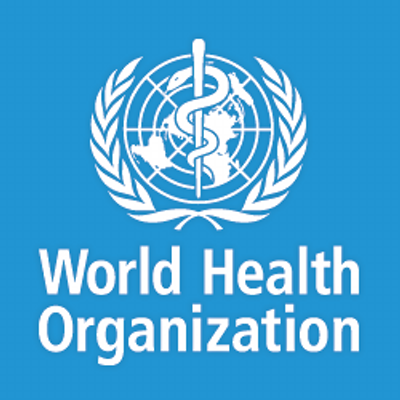WHO | Ambient air pollution: A global assessment of exposure and burden of disease
This report presents a summary of methods and results of the latest WHO global assessment of ambient air pollution exposure and the resulting burden of disease.
Air pollution has become a growing concern in the past few years, with an increasing number of acute air pollution episodes in many cities worldwide. As a result, data on air quality is becoming increasingly available and the science underlying the related health impacts is also evolving rapidly.
Quick Fact Sheet
The results of a new model developed to estimate population exposure to PM2.5 at country level are presented. This model is a big step forward, as it provides reliable information for countries with little information on air pollution levels, either because there is no air quality monitoring or it is not available. The model relies on satellite data and ground measurements, which are getting increasingly available.
Less than 1 in 10 people live in a place that complies with WHO Air Quality Guidelines. Asia and the Middle East, and low-and middle-income countries are the most affected regions.
Ambient air pollution-related health effects killed 3 million people in 2012, which makes it one of the largest environmental risks. Western Pacific and South East Asian regions bear the bulk of the burden, with almost 2/3 of the deaths.
The modelled estimates of exposure to PM2.5 are provided for all countries; the global model used to produce these estimates relies on various sources of data, such as remote satellite data, chemical transport models, topography, and ground measurements. Whenever no ground measurements were available for a country, the model relied on regionally calibrated satellite measurements.
https://twitter.com/DrMahtabSingh1/status/782192170904223744
The modelled estimates of exposure to PM2.5 are provided for all countries; the global model used to produce these estimates relies on various sources of data, such as remote satellite data, chemical transport models, topography, and ground measurements. Whenever no ground measurements were available for a country, the model relied on regionally calibrated satellite measurements.
The WHO Global Urban Ambient Air Pollution Database on air quality is a compilation of ground monitored measurements of PM2.5 and/or PM10. It covers about 3000 cities and towns in 103 countries, with a majority of measurements from high-income countries, in particular Europe and North America. The database covers years from 2010 to 2015. The database contains data that was either publicly available or provided by the countries at the end of 2015. It is acknowledged that countries /cities may have more recent and comprehensive data available.
Evidence on the link between air pollution and health is accruing, and methods are continuously being updated to take these improvements into account. Also the exposure estimates to PM2.5 are becoming more accurate as more monitoring results are becoming available and modelling is becoming more performant.
In summary, improvements in data and methods are allowing us to provide more reliable and accurate estimates over time. The decrease of 7 million to 6.5 million deaths per year is not a reflection of an improvement of air quality.
WHO does not rank countries. The regions that have the highest air pollution levels are South East Asia, the Eastern Mediterranean and the Western Pacific regions, although some of them have a large share of natural dust, which is captured in the estimates.
Again, WHO does not rank countries. Three quarters of the population in high-income and 20% of the low-and-middle countries of the Americas, and less than 20% of the European and Western Pacific high-income countries breathe air that does meet the WHO Air Quality Guideline (AQG) level of 10 ug/m3 for PM2.5. In addition, people within countries are unevenly exposed to air pollution, depending if they live in a city or in a rural area, or if they live close to a busy road, or to polluting industries.
Countries and cities have their own air quality standards (e.g. annual mean levels, 24 hour levels), which may differ from the WHO Air Quality Guidelines.
The global model relies on various sources of data, such as remote satellite data, chemical transport models, topography, and ground measurements. The model has a hierarchical structure within which calibration equations are produced for individual countries using, as a priority, data from that country where available. Where data within a country is insufficient to produce accurate estimates, the calibration uses regional information.
In 2014, WHO published only regional data on mortality associated with ambient air pollution for the year 2012, as there were no reliable estimates of exposure at country level. With the new global model of exposure, the uncertainty of the data is reduced. In addition, data also went through a country consultation process.
Wherever possible, estimates of both exposure to PM2.5 and burden of disease have been computed using standardized categories and methods in order to enhance cross-national comparability. This approach may result in differences between the estimates presented here and the official national statistics prepared by individual WHO Member States. These differences in exposure to PM2.5 between WHO and national statistics may be larger in countries with small cities and settlements which may not be fully represented by the resolution of the WHO model. This may be compounded for isolated regions where air pollution is primarily from local sources and is experienced at very local levels.
For burden of disease estimates, WHO uses its own health statistics and the integrated exposure response-functions to derive the health impacts from ambient air pollution. As countries have their own health statistics and may use different methods, burden of disease estimates may be different.
The numbers of deaths per 100,000 population are influenced by the age distribution of the population. Two populations with the same age-specific mortality rates for a cause of death will have different overall death rates if the age distributions of their populations are different. Age-standardized mortality rates adjust for differences in population age distribution by applying the observed age-specific mortality rates for each population to a standard population.
Age-standardized mortality rates can therefore be used to compare the mortality rates of countries without being affected by the difference in age distributions from country to country. Without using this standardization, it would be unclear if differing mortality rates were due to age or as a result of other factors.
The age-standardized mortality rate is a weighted average of the age-specific mortality rates per 100,000 persons, where the weights are the proportions of persons in the corresponding age groups of the WHO standard population
The World Health Statistics 2016 presented the mortality rate from the joint effects of both household and ambient air pollution (SDG 3.9.1) as well as the population exposure to urban annual to PM2.5 (SDG 11.6.2).
The present report features the burden of disease attributed to ambient air pollution only. It also presents the detailed methods and results for the indicator 11.6.2, “Annual mean levels of fine particulate matter (PM2.5) in cities (population-weighted)”. The country data may differ from the estimates published in May 2016, as the data has been finalized and has also been reviewed by WHO Member States during the country consultation process.
Major sources of ambient air pollution include inefficient modes of transport (polluting fuels and vehicles), inefficient combustion of household fuels for cooking, lighting and heating, coal-fired power plants, agriculture, and waste burning.
Interventions to reduce air pollution include developing sustainable transport in cities; implementing solid waste management; providing access to clean household fuels and cookstoves; developing market for renewables energies and energy efficiency, and implementing industrial emissions reductions.
![]()


